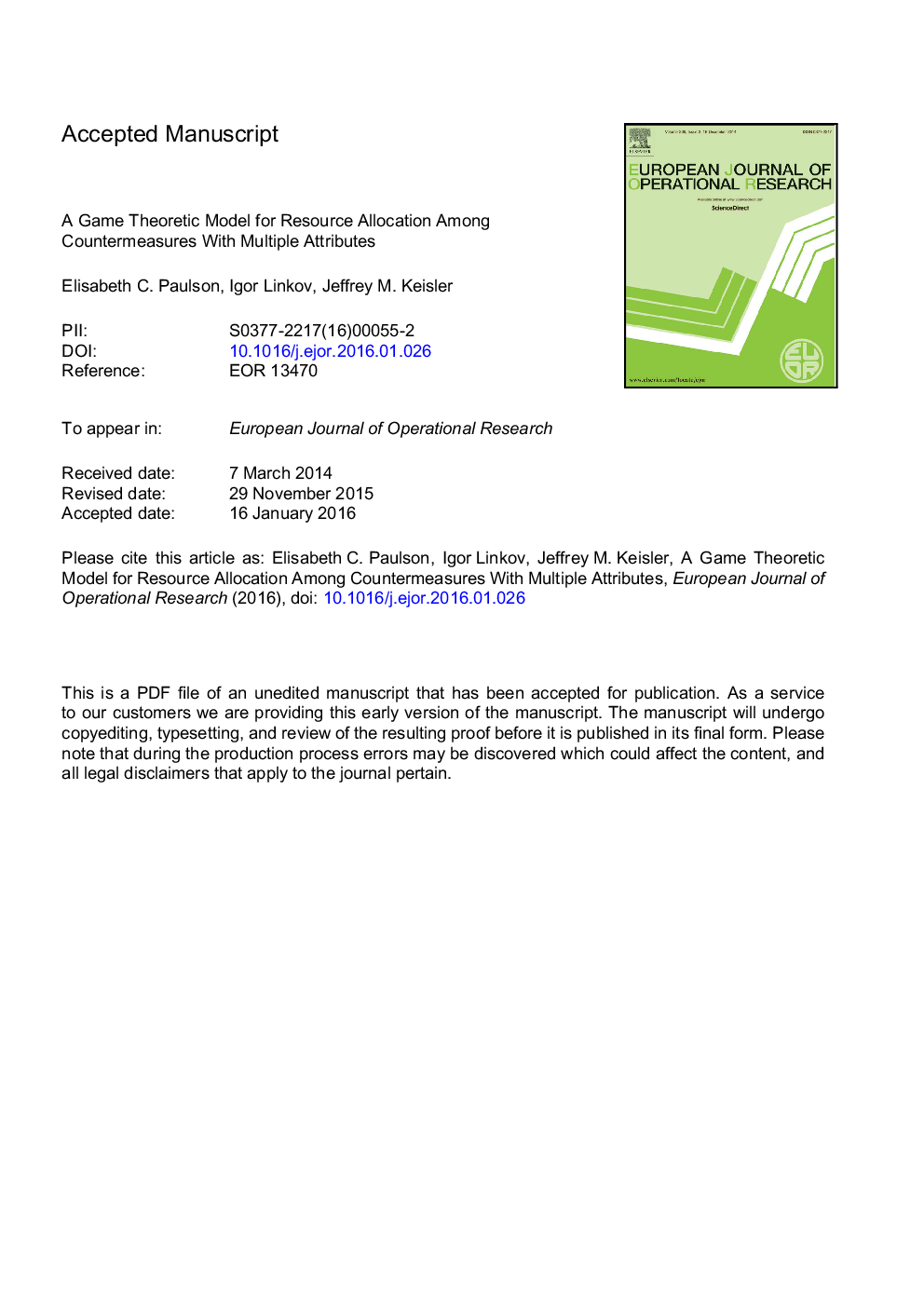| Article ID | Journal | Published Year | Pages | File Type |
|---|---|---|---|---|
| 6895739 | European Journal of Operational Research | 2016 | 31 Pages |
Abstract
We study a strategic, two-player, sequential game between an attacker and defender. The defender must allocate resources amongst possible countermeasures and across possible targets. The attacker then chooses a type of threat and a target to attack. This paper proposes a model for determining optimal resource allocation by combining game theory with a simple multi-attribute utility model. Given a set of possible attributes representing goals or preferences, we allow each player to choose a weight for each attribute, where the subset of attributes with nonzero weights represents that player's preferences. Every countermeasure is given a score for its effectiveness at both mitigating the effects of an attack in terms of each attribute and reducing the probability of the success of an attack. Furthermore, the consequences of each possible attack are scored in terms of each attribute. The multi-attribute utility aspect of this model uses these scores, along with the players' weights, to form the basis of the utility (or disutility) for each player. We find that (i) the zero-sum game where the attacker's and defender's weights are identical results in the worst losses for the defender, (ii) in general cases the defender's equilibrium strategy has the result of making the attacker indifferent between multiple attacks and (iii) the use of target-independent countermeasures (i.e. countermeasures which operate at national levels as opposed to operating at differing levels for each target) can increase the cost-effectiveness of countermeasures.
Related Topics
Physical Sciences and Engineering
Computer Science
Computer Science (General)
Authors
Elisabeth C. Paulson, Igor Linkov, Jeffrey M. Keisler,
